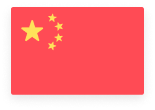Recent months have seen an increase in exports from Asia. Schroders in a recent analysis points out that this trend is being propelled by the reduced prices of Chinese exports, which in turn can have adverse long-term consequences.
“…while China’s exports recovered in the second half of last year, there are signs that firms in some sectors have been forced to discount goods in order to clear spare capacity,” writes David Rees, Senior Emerging Markets Economist at Schroders.
He points out that while nominal export growth in the country has only modestly recovered, export volumes have significantly expanded. This apparent discrepancy between export volumes and values is partly due to the impact of commodity prices, as per the asset manager.
Historically, prices of Chinese exports have correlated closely with commodity prices, particularly energy. “If commodity prices remain at current levels, China’s export prices will start to turn around in the months ahead as base effects wash out,” says Schroders.
However, as per Rees, the current large gap between commodity and export prices suggests that manufacturers are discounting to stimulate external demand and absorb excess supply. Sectors like steel, affected by the housing market downturn, are witnessing substantial discounts, he adds.
However, Rees warns that the discounting strategy employed by Chinese exporters may have long-term consequences. Continuous discounting to address excess capacity could lead to chronic profit margin squeezes for Chinese firms and impact equity returns, cautions Schroders.
Furthermore, the asset manager contends that an influx of cheap Chinese exports into global export markets might fuel anti-China sentiment, particularly during the US election race, accelerating the deglobalisation trend.
“As a result of rising levels of protectionism, reshoring and ‘friendshoring’ trends are testing the globalised model of extended supply chains. China Inc’s manufacturing sector sits at the heart of the model and had contributed to a long-term decline in goods prices,” asserts Rees.
“This occurred for a large part of the last three decades and resulted in the global economy’s Non-Inflationary Consistently Expansionary, or ‘NICE’ era,” concludes the asset manager.


 Australia
Australia China
China India
India Indonesia
Indonesia Japan
Japan Malaysia
Malaysia Philippines
Philippines Singapore
Singapore South Korea
South Korea Taiwan
Taiwan Thailand
Thailand Vietnam
Vietnam







